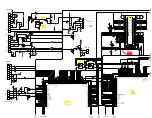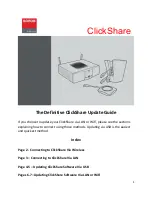
O P E R AT I N G I N S T R U C T I O N S | Bulkscan®
8014829/ZV98/2018-05-07 | S I C K
Subject to change without notice
4 4
ELECTRICAL INSTALLATION
6
Electrical installation
• Only authorized personnel are allowed to perform the electrical installation work.
• Do not open the sensor housing.
• Observe the current safety regulations when working on electrical systems.
Risk of injury! Risk of damage to the sensor!
The machine/system to which the sensor will be connected could be inadvertently
started.
Switch the entire machine/system off before connecting the sensor.
Make sure that the entire system is disconnected from the power supply during the
electrical installation.
Overview of the steps for the electrical installation
• Observe the Requirements for the electrical installation (see "6.1 Requirements for
the electrical installation“ on page 44).
• Carrying out the electrical installation on the Bulkscan® (see "6.2 Carrying out the
electrical installation on the Bulkscan®“ on page 46).
• Wiring the inputs and outputs to the external components (see "6.3 Wiring the inputs
and outputs to the external components“ on page 51).
6.1
Requirements for the electrical installation
6.1.1
Avoiding potential differences
The Bulkscan® is connected to the peripheral devices (power supply, encoder, PLC/
host, etc.) via shielded cables (Fig. 26). The shield of each cable is connected to the
metal housing of the sensor via the system plug.
The sensor can be grounded via the mounting brackets of the mounting kits or via the
shield of the power supply cable, for example.
If the peripheral devices have metal housings and if the cable shields also are con-
nected to their housings, it is assumed that all devices involved in the system
have the
same ground potential.
This is achieved by fulfilling the following conditions, for example:
• Mounting the devices on conductive metal surfaces.
• Correctly grounding the devices and metal surfaces in the system.
• If necessary, low-impedance and current carrying equipotential bonding between
areas with different ground potentials.
If these conditions are not met, e.g., on devices in a widely distributed system over sev-
eral buildings, potential equalization currents may, due to different ground potentials,
flow along the cable shields between the devices.
















































